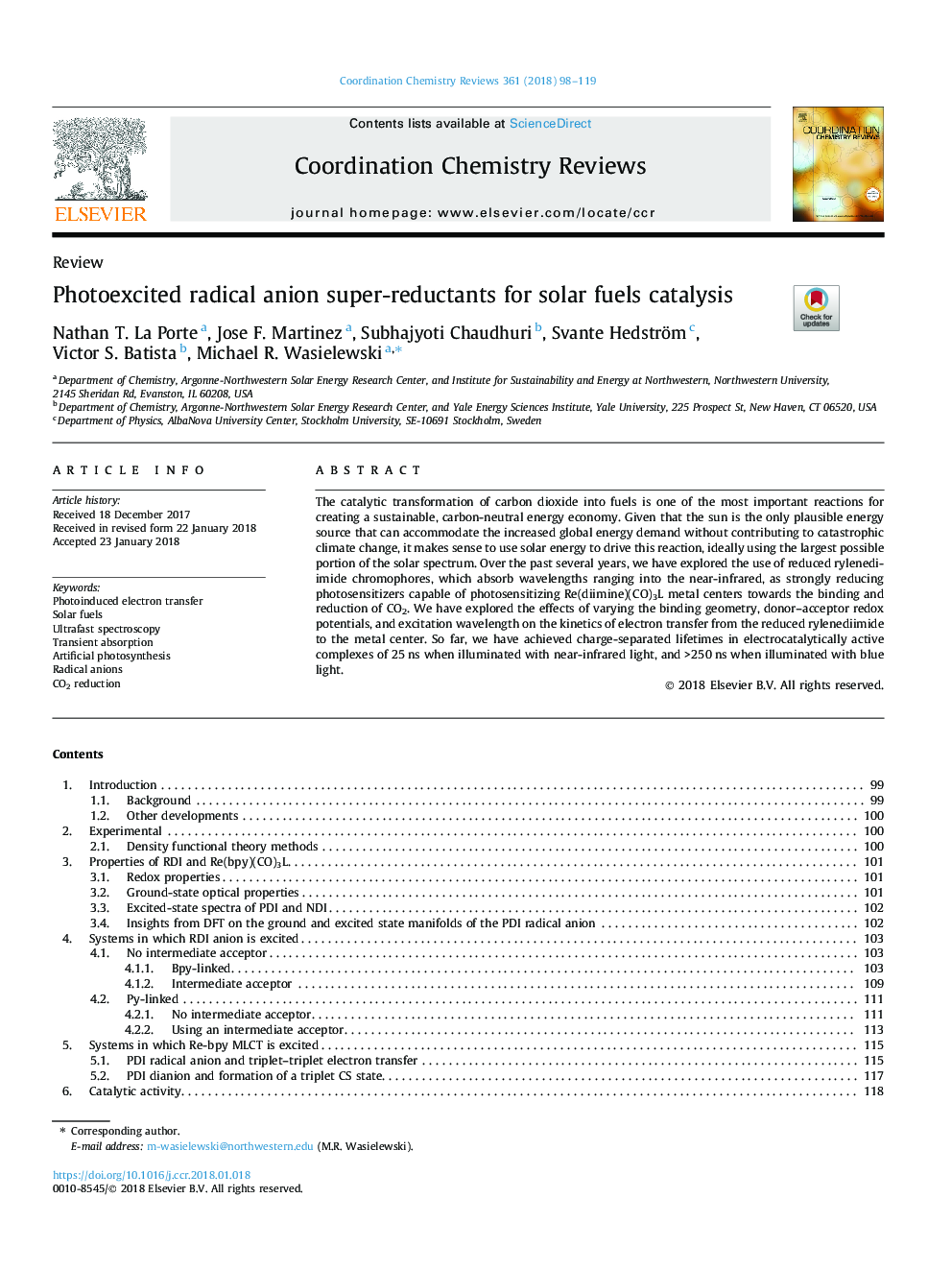| Article ID | Journal | Published Year | Pages | File Type |
|---|---|---|---|---|
| 7747631 | Coordination Chemistry Reviews | 2018 | 22 Pages |
Abstract
The catalytic transformation of carbon dioxide into fuels is one of the most important reactions for creating a sustainable, carbon-neutral energy economy. Given that the sun is the only plausible energy source that can accommodate the increased global energy demand without contributing to catastrophic climate change, it makes sense to use solar energy to drive this reaction, ideally using the largest possible portion of the solar spectrum. Over the past several years, we have explored the use of reduced rylenediimide chromophores, which absorb wavelengths ranging into the near-infrared, as strongly reducing photosensitizers capable of photosensitizing Re(diimine)(CO)3L metal centers towards the binding and reduction of CO2. We have explored the effects of varying the binding geometry, donor-acceptor redox potentials, and excitation wavelength on the kinetics of electron transfer from the reduced rylenediimide to the metal center. So far, we have achieved charge-separated lifetimes in electrocatalytically active complexes of 25â¯ns when illuminated with near-infrared light, and >250â¯ns when illuminated with blue light.
Keywords
Related Topics
Physical Sciences and Engineering
Chemistry
Inorganic Chemistry
Authors
Nathan T. La Porte, Jose F. Martinez, Subhajyoti Chaudhuri, Svante Hedström, Victor S. Batista, Michael R. Wasielewski,
